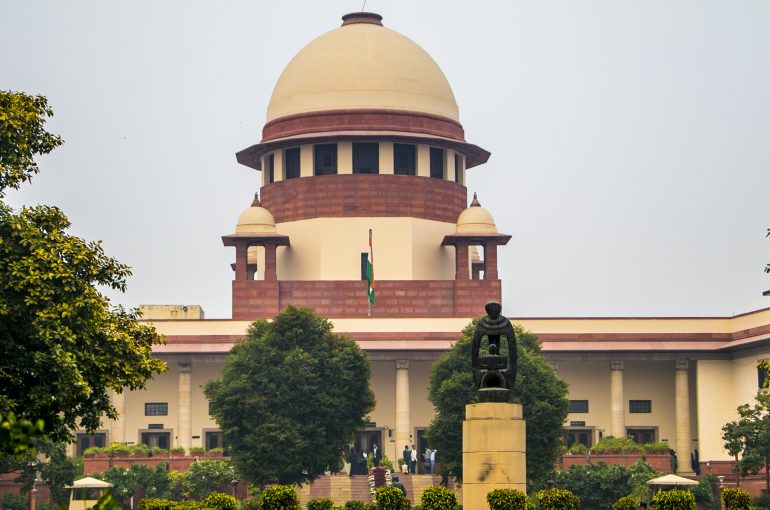SUPREME COURT CLARIFIES: A COMPANY AS A LEGAL ENTITY CAN FILE AN APPEAL AS A VICTIM UNDER SECTION 372

BRIEF FACTS
In its recent decision in Asian Paints Ltd. v. Ram Babu & Anr. (SLP (Criminal) No. 9888 of 2024, decided on 14 July 2025), the Supreme Court of India, comprising Justice Ahsanuddin Amanullah and Justice Prashant Kumar Mishra, unequivocally held that a “victim” under the proviso to Section 372 of the Criminal Procedure Code, 1973 need not necessarily be the Complainant or Informant in the criminal proceedings. The matter stemmed from a case in which Asian Paints Ltd., a prominent paint manufacturer, allegedly suffered economic and reputational harm as a result of the sale of counterfeit paint products by the Accused.
A Complaint had been lodged through the Authorized Agent of Asian Paints under Section 420 IPC and Sections 63 and 65 of the Copyright Act, 1957. Following a trial, the Accused were acquitted, and an Appeal was filed by Asian Paints before the High Court challenging the acquittal under the proviso to Section 372 CrPC. The High Court dismissed the Appeal on the ground that Asian Paints Ltd., not being the complainant or informant on record, lacked the requisite locus standi to maintain an appeal under the proviso to Section 372 of the Criminal Procedure Code, 1973
ISSUES OF LAW
- Whether a person who suffers loss or injury due to an offence, but is not the complainant/informant, qualifies as a “victim” under Section 2(wa) CrPC.
- Whether such a victim has the right to file an appeal under the proviso to Section 372 CrPC against acquittal.
- Whether the proviso to Section 372 CrPC operates independently of the provisions of Section 378 CrPC, which generally governs appeals against acquittals.
THE COURT HELD THAT:
The definition of “victim” under Section 2(wa) CrPC includes not only natural persons but also juristic entities like companies that have suffered loss or injury due to the act or omission of the accused.
The proviso to Section 372 of the CrPC is a standalone provision that confers an independent right of appeal upon the victim and must be interpreted independently, without being subject to the procedural requirements of Section 378 CrPC or other provisions governing appeals against acquittal. It is not subject to Section 378 CrPC, and the right of appeal conferred upon a victim cannot be curtailed by importing the procedural requirements of Section 378.
The language of the proviso to Section 372 CrPC is clear and unambiguous in conferring a statutory right of appeal upon a victim against the following categories of orders:
(i) an order acquitting the accused,
(ii) an order convicting the accused for a lesser offence, or
(iii) an order imposing inadequate compensation.
The fact that the complaint was filed by an authorized agent does not disentitle the company from being recognized as the actual victim.
The Court further referred to the decision in Mahabir v. State of Haryana, 2025 SCC OnLine SC 184, to reiterate the objective behind the 2009 Amendment which introduced the proviso to Section 372 CrPC. The purpose was to provide greater participatory rights to victims who are otherwise passive observers in the criminal process.
Importantly, the Court also held that the right of appeal under the proviso exists regardless of whether the acquittal was passed by a Trial Court or the First Appellate Court.
ANALYSIS
This ruling significantly reinforces the victim-centric approach envisioned by the CrPC amendments. It underscores the principle that substantive rights—particularly the right of a victim to seek appellate redress—must not be sacrificed at the altar of procedural formalism, and that the criminal justice system must remain focused on delivering effective and meaningful justice. The Judgment is particularly relevant in the context of corporate victims and offences involving intellectual property, counterfeit goods, or economic loss, where the actual harm may be suffered by entities rather than individuals.
By holding that the term “victim” must be interpreted in the light of actual injury or loss, the Court has widened the door of appellate remedies to those who genuinely suffer due to the crime, irrespective of whether they appear as complainants in the procedural record.
CONCLUSION
The Supreme Court’s ruling is a necessary clarification of the scope of Section 372 CrPC. It reaffirms that the criminal justice system must not elevate procedural technicalities above the right to redress. Victims—whether individuals or corporations—now have a clearer pathway to challenge acquittals, ensuring that their voices are heard in the pursuit of justice.
SARTHAK KALRA
Senior Legal Associate
The Indian Lawyer & Allied Services
Please log onto our YouTube channel, The Indian Lawyer Legal Tips, to learn about various aspects of the law. Our latest Video, titled Uniform Civil Code Explained | Pros, Cons & Constitutional Perspective | Advocate Sushila Ram Varma| can be viewed at the link below:
https://www.youtube.com/watch?v=NKJgw5k4kQU





































Leave a Reply